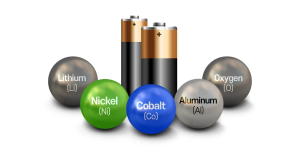LiFePO4 Battery Charging Guide

Charge Safety for LiFePO4 Batteries
Make sure you READ and ADHERE to these crucial safety instructions before charging LiFePO4 batteries(LiFePO4 Battery Charging Guide):
1 NEVER charge LiFePO4 batteries with a charger that isn’t designed to work with them!
2 The cell MUST be fully charged and discharged before usage in order to activate it and provide its full capability.
3 LiFePo4 batteries should only ever be charged in well-ventilated areas.
4 Once the cell temperature reaches the absolute charge temperature range, stop charging the battery regardless of the charge mode it is in.
5 Once the cell voltage surpasses the absolute charge voltage, stop charging the battery regardless of the charge mode it is in.
6 Whenever LiFePO4 batteries are meant to be kept in storage for an extended period (more than a month), the SOC of the cells should be routinely adjusted to around 50%. (every three months is recommended).
Why should you fully charge your LiFePO4 battery before using it
Before assembling into a pack and before use, the LiFePO4 cells and batteries MUST be charged to a full voltage level for activating.
Before the battery pack is used for the first time, the cells will be fully charged and balanced in this manner.
Making the initial charging is crucial, even in straightforward installations. In addition to the initial installation, we advise periodically inspecting the battery pack’s cells and performing individual charging to fully balance each cell.
Can A Lithium Battery Be Charged By A Lead-Acid Charger
Lithium batteries can be harmed, undercharged, or have their capacity reduced over time if SLA chargers are used to charge them.
USE ONLY A CHARGER THAT CAN CHARGE LIFEPO4 VOLTS USING THE “CONSTANT CURRENT/CONSTANT VOLTAGE” (CC/CV) TECHNIQUE.
It is crucial to match your charger to the battery you are charging so that it delivers the proper current and voltage.
Why Should A LiFePO4 Battery Not Be Charged Below 0°C/32°F
In order to prevent unintentional capacity reduction, LiFePO4 batteries should not be charged at temperatures below 0°C/32°F (this includes standard charging, fast charging, and emergency charging). The minimum charging temperature should be used to govern the battery management system.
The charge current causes the lithium ions to travel at a quicker response rate and build up on the surface of the anode, which results in lithium plating.
When this chemical reaction takes place, the battery’s internal resistance rises and the pace of chemical metabolism slows down. Every time this chemical reaction takes place, the battery’s capacity is permanently reduced, and this process will continue indefinitely.
The battery manufacturer will reveal the battery’s operational temperature (when charging and discharging) on the product specification; only the installation criteria must be strictly adhered to.
How Should LiFePO4 Batteries Be Maintained During The Winter

In order to prolong the life of your lithium batteries during the chilly winter months, you can do a number of things, such as:
1 Keeping them at the right temperature is step one. Keep your lithium batteries in an area where the temperature doesn’t rise over 80 degrees Fahrenheit or fall below 32 degrees.
2 Recurringly charging them: Lithium batteries should never be left completely discharged, thus it’s crucial to charge them throughout the winter when their susceptibility to sudden power loss is greatest.
3 Cleaning them: It’s critical to keep your lithium batteries clean since corrosion and dirt can shorten the life of the battery by making it lose charge more quickly. A gentle cleaning solution can be created with baking soda and water.
The LiFePO4 Battery's Changing Voltage
There will be some voltage variations in LiFePO4 batteries during charging and discharging.
The typical voltage range is 2.5V to 3.65V, with 3.65V being the highest charge cut-off value. If it exceeds this threshold, the battery may have issues. Additionally, the discharge cut-off voltage is 2.5V; if it is lower, the battery is over-discharging. However, due to the stable discharge platform, the voltage of the LiFePO4 battery will often be kept between 3.15 and 3.3V.
Furthermore, LiFePO4 batteries do not require float charging, and doing so could actually cause them to be overcharged.
3 Methods for Measuring LiFePO4 Battery Capacity
1. Use a multimeter to gauge battery voltage
Pros: moderately precise
Cons: The battery needs to rest after removing all loads and charges.
Depending on the charge and discharge rates, battery voltage varies. Additionally, the discharge curve for LiFePO4 batteries is comparatively flat between 99 and 20 percent of capacity. It might be challenging to determine their state of charge from voltage alone due to these considerations.
You must first turn off all loads and chargers before you can estimate the battery capacity based on voltage. (Remember to first unplug your charging controller from your solar panels!)
I normally wait 15 minutes to measure the battery’s voltage after letting it rest for a little period.
If your battery literature includes a state-of-charge graph or the proper voltage curve is displayed above, you should compare your measurement to that. Use it to get a rough sense of how much remaining capacity your battery has.
I recently bought a Maxworld power 12V 100Ah LiFePO4 Deep Cycle Battery as an illustration. I took it out of the box as soon as it was delivered and used a multimeter to check its voltage. I measured 13.23 volts.
I next compared this value to the state of charge chart for 12V LiFePO4 shown above as well as the battery instructions.
My battery’s state of charge, according to the charts, was probably around 80%.
This approach works best for me when determining the charge level of a new LFP battery. The battery is unconnected and at rest right now. I find that it is too uncomfortable to remove anything once the battery is in use.
To determine which battery cells—such as LFP cells and 18650 lithium batteries—are reliable and which are defective, DIY lithium battery makers will also monitor the voltage of both new and old battery cells.

2. Use a Battery Monitor
Pros: Most precise and practical
Cons: Quality battery monitors are pricey.
Connecting a reliable battery monitor is the most effective approach to keeping track of battery capacity.
Battery monitors keep track of the number of amp hours used to precisely determine the level of charge. Additionally, they provide helpful system specifications like battery voltage and current. Some pair with your phone via Bluetooth so you can use a mobile app to check the capacity of your LiFePO4 battery.
3. Use a Solar Charge Controller
Pros: Convenient
Cons: Inaccurate
You could be thinking, “My solar charge controller already detects battery voltage.” I can just check the battery capacity with it.
But! This voltage measurement is incorrect. It has all of the aforementioned drawbacks in addition to being carried out while the battery is linked to loads and chargers.
For instance, keep in mind that when I used a multimeter to check the voltage of my battery at the battery terminals, the measurement was 13.23 volts. That corresponds to a charge state of about 80%.
However, the MPPT charge controller I used to connect my battery to only registered 13.0 volts. That represents a difference of 50% or a state of charge of about 30%! Of course, some charge controllers can read the battery voltage considerably more precisely than others.
Because of the load, the voltage does decrease. And a load is a charge controller. The battery’s voltage would increase immediately if a solar panel were connected, which would begin solar charging the battery.
This method of determining battery capacity is practical. It can, however, be highly inaccurate, so use caution. I usually use this voltage reading to check that my battery isn’t almost completely dead.
A battery voltage sensor, such as the Victron Smart Battery Sense or the Renogy Battery Voltage Sensor, can be purchased if you utilize this method and want to ensure that it is as accurate as possible. Particularly in solar power systems with lengthy wire runs, a voltage sensor provides the controller with a more precise voltage reading.
-1024x681.jpg)
FAQ on LiFePO4 Voltage
What is the voltage of a 12V LiFePO4 battery when it is fully charged
The charging voltage and resting voltage of a completely charged 12V LiFePO4 battery is 14.6 and 13.6 volts, respectively.
How far can a LiFePO4 battery be discharged
Numerous LiFePO4 batteries can discharge to 100% of their rated capacity each time without experiencing any negative impacts.
To maximize battery life, several manufacturers advise discharging batteries no more than 80% of the way. In reality, several manufacturers base their battery cycle life claims on an 80 percent depth of drain (DoD).
Conversely, lead acid batteries can only discharge 50% of their rated capacity. Therefore, the useful capacity of a 12V 100Ah LFP battery is equal to that of a 12V 200Ah lead acid battery.
What is a 12V LiFePO4 battery's low-voltage cutoff
Many 12V LiFePO4 batteries have a low-voltage cutoff of roughly 10 volts. To prevent the battery cells from being overly discharged, the BMS should detect when the battery voltage drops below 10 volts and switch to sleep mode.
The low-voltage disconnect is another name for low-voltage cutoff, and both terms are occasionally written as LVD.
Low voltage readings, often less than 5 volts, are possible for LFP batteries when they are in sleep mode. The battery may appear to be dead, but it’s actually simply sleeping.
A battery must be awakened after going into sleep mode. To do this, refer to your battery’s manual. Jump starting normally entails using a second 12V battery.
What is the 12V LiFePO4 battery's float voltage
Because LiFePO4 batteries don’t leak charge as lead acid batteries do, they don’t require float charging.
If you can’t, set the float voltage to the recommended value specified in the battery specs, which is normally 13.6 volts plus or minus 0.2 volts, to prevent the battery from entering float charge.











